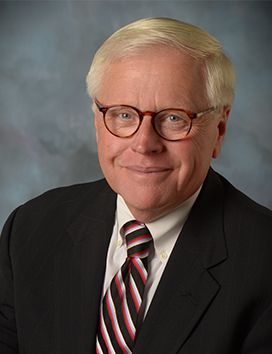Dedication is more often than not one of the definitive names of the game for people who devote themselves to the reverse mortgage profession, and one industry participant who remains highly dedicated to the space on the origination and sales side is John Luddy, SVP of reverse mortgage lending at Norcom Mortgage in Avon, Ct.
For years, Luddy has been sharing his in-depth knowledge and perspectives on how a reverse mortgage professional can best appeal to seniors who are considering a reverse mortgage, offering tips that some loan originators may not have thought of based on his decades of experience in mortgage and reverse mortgage lending.
Expounding on many of those tips, Luddy sat down for the latest episode of The RMD Podcast to share some of his most memorable sales pointers, as well as perspectives about how the reverse mortgage business has evolved since he’s been in the industry. He also offers thoughts on how borrowers in the senior demographic have changed and confronting new realities surrounding retirement.
Starting the sales tips, and some examples
Luddy began offering reverse mortgage sales tips via video through the platform of Reverse Focus. Before long they evolved into a standalone endeavor that aimed to include ideas rooted in a semblance of common sense. Still, they are additionally filtered through the prism of someone more concerned explicitly with meeting and appealing to seniors, he explains.
“They’re all really unscripted,” he says. “I just go in there with a couple of things to think about. Little tips that some people who may not be worrying about selling as much as I am, and that [they maybe] don’t even think about. When I go to a reverse mortgage client’s house, I don’t ring the doorbell. Most of our clients have delayed maintenance, many of the doorbells don’t ring. So, I usually call them on the phone to say I’m at their front door, or I knock.”
Ringing the doorbell as a first action may lead to a long wait or a need to offer a responding senior additional time if their mobility is limited, Luddy says. Some might see other tips as “no-brainers,” but they can have a specific further need added on top of “common sense” due to the sensitivities of senior clients, Luddy explains.
“Showing up on time is another tip, we all know to do that,” Luddy says. “But, we don’t realize how important that is for senior who’s standing at the window up and down waiting. You come 15 minutes late to an appointment with a senior, you might as well not get out of your car, because they’re so wound up that your [likelihood] of closing that loan is going to be diminished by that.”
Keeping in mind how seniors absorb information at this stage in their lives is paramount, Luddy says.
“One of the most important things that people should remember, early in the reverse mortgage sales conversation is to ask them what they did when they were working,” he says. “People absorb information based on their life experience. So, someone who was an engineer at Pratt & Whitney aircraft manufacturer is going to want a much different, more detailed explanation than the art teacher at Vance Street Elementary School. So knowing what they did, and then listening carefully to their language and the speed at which they talk.”
People generally absorb information at the same rate they speak, Luddy says. The speed with which the client is speaking can be a major hint for the attending loan officer about the speed they themselves should speak at, which could increase the client’s likelihood of retaining important information.
How seniors and reverse mortgage products have evolved
In terms of noticing how reverse mortgage-eligible clients themselves have evolved over his nearly two decades in the reverse space, Luddy has noted a change in both the mindsets of current seniors as well as some significant changes to the availability of certain products in the sales landscape.
“Initially 15-18 years ago, my clients were the classic ‘little old ladies,’” Luddy says. “About 72 years old, needed an extra $500 a month, etc. Today, for a variety of reasons, some driven by the economy, some driven by the product selection, our clients now are typically younger, some of them are much more sophisticated.”
That new sophistication largely stems from technology, Luddy says, since the chances are higher for modern retirees that they have had to work far more with computers and the internet than those who retired 20 years ago, he says.
“Someone who is 65 years old today has probably been working with computers throughout their career,” Luddy explains. “So they’re much more computer-sophisticated. They may want us to email documents to them instead of meeting them face-to-face. Certainly, with some of our products where the age goes down to 55, I’m writing mortgages for people ten years younger than I am. So, that speaks to something.”
Both Reverse Mortgage Funding (RMF) and Finance of America Reverse (FAR) announced that their proprietary offerings would be made available to borrowers as young as 55 in some states. Indeed, Luddy was one of the first originators in the country to pounce on RMF’s offering, as he shared with RMD when the news broke earlier this year.
Listen to the latest episode of The RMD Podcast for the complete discussion.




